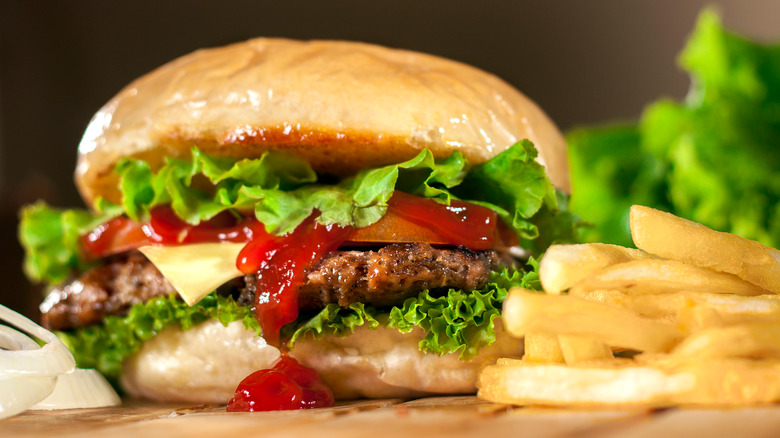Do Oreos Actually Have Less Filling Because Of Inflation?
As inflation fluctuates, consumers are feeling the squeeze: Price hikes, stock gaps, and the dreaded shrinkflation effect. High beef prices mean menu price increases at Texas Roadhouse and low-to-no stock at Costco. McDonald's customers are feeling misled by the size of the Quarter Pounder. And now, shoppers are skeptical that Oreos are the latest to fall to the production trimming.
In the Skrinkflation subReddit, a post from September picked up speed, even getting attention from the Wall Street Journal. The cookies, commenters said, were big offenders of false advertising. The photos all show creme from edge to edge, while the actual cookies have a large margin of cookie bordering a dollop of creme in the middle. The problem even floated the idea of a false-advertising class action lawsuit. But are the cookies actually any different than they used to be? According to Oreo, no, they're not.
Mondelez International, the parent manufacturer of Oreo cookies, has admitted to inflation-driven changes in Oreos over the years. Cocoa and sugar are more expensive than they used to be (everything is). It's raised wholesale prices, slashed discounts, and even shrunk package sizes. The one thing it hasn't done, it said, is mess with quality. "We would be shooting ourselves in the foot if we would start to play around with the quality," Mondelez CEO Dirk Van de Put told the Journal. He claims that the creme ratio hasn't actually changed despite the pitchfork-and-torch fervor of the Shrinkflation forum.
Can you win a false advertising lawsuit like this?
In short, probably not. There are several laws that protect consumers against deceptive advertising, and lawsuits are often brought against food giants. A suit was brought against McDonald's and Wendy's in 2022 that was finally decided in the fall of 2023. The plaintiff's main complaint was that advertisements showed food that looked much more appetizing than it was in real life. The basis of the lawsuit was that the actual product was of much lower value than what was being promised in the ads. McDonald's and Wendy's won the suit. The judge ruled that they had not engaged in anything different than any other company advertising its products, and there were prominent disclaimers of product weight and caloric content on the companies' websites.
Mondelez doesn't promise how much creme it puts into its regular Oreos. A case could be made that Double Stuf Oreos don't actually include twice the creme of a regular Oreo and, therefore, fall under false advertising. With the proper disclaimers, this assertion becomes hard to win in court. Advertising for the traditional Oreo likely falls under the same precedent as the McDonald's and Wendy's suit and could be ruled similarly. Though the discontent is loud and clear, these lawsuits are unlikely to be ruled in favor of the consumer.

